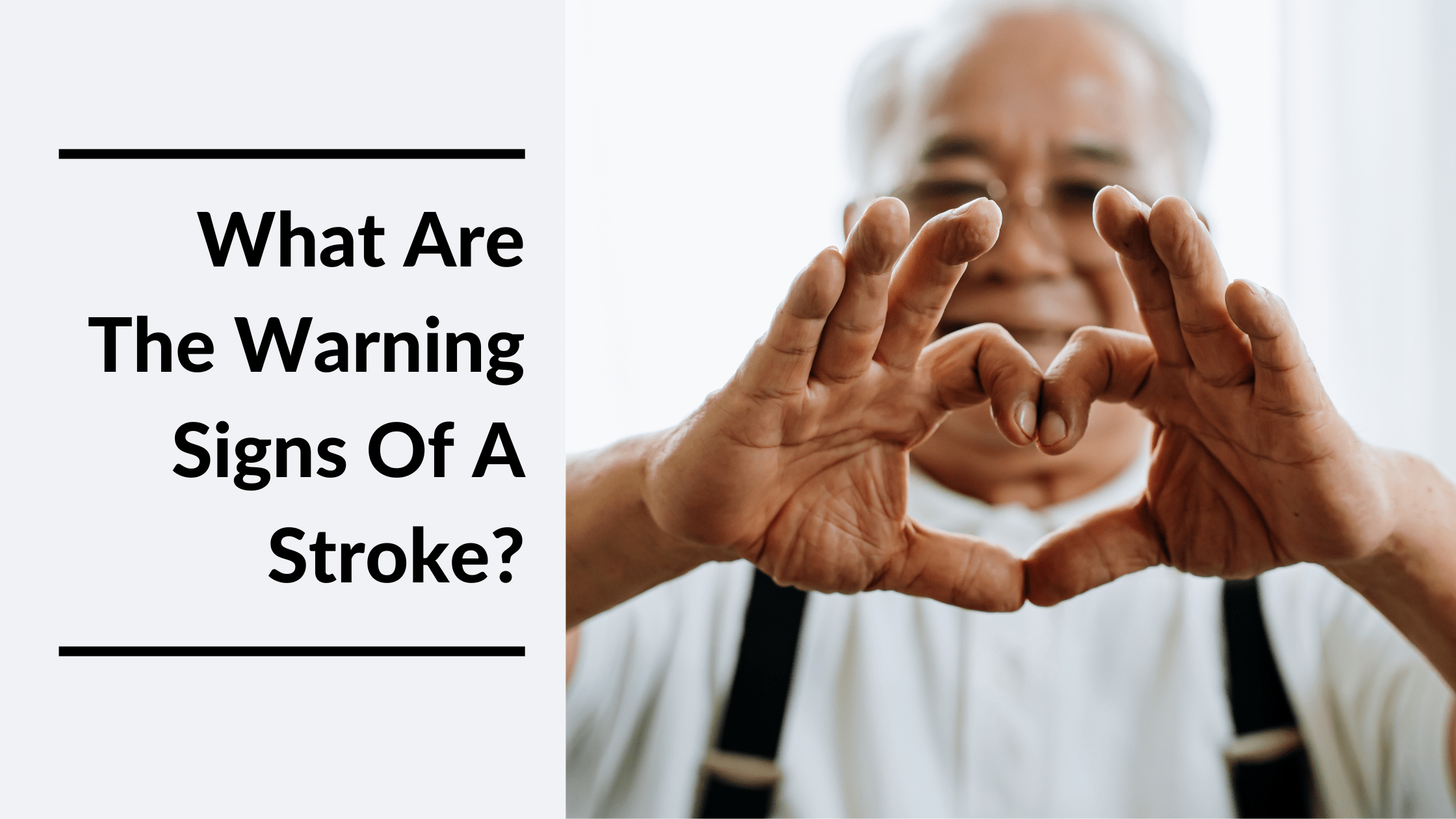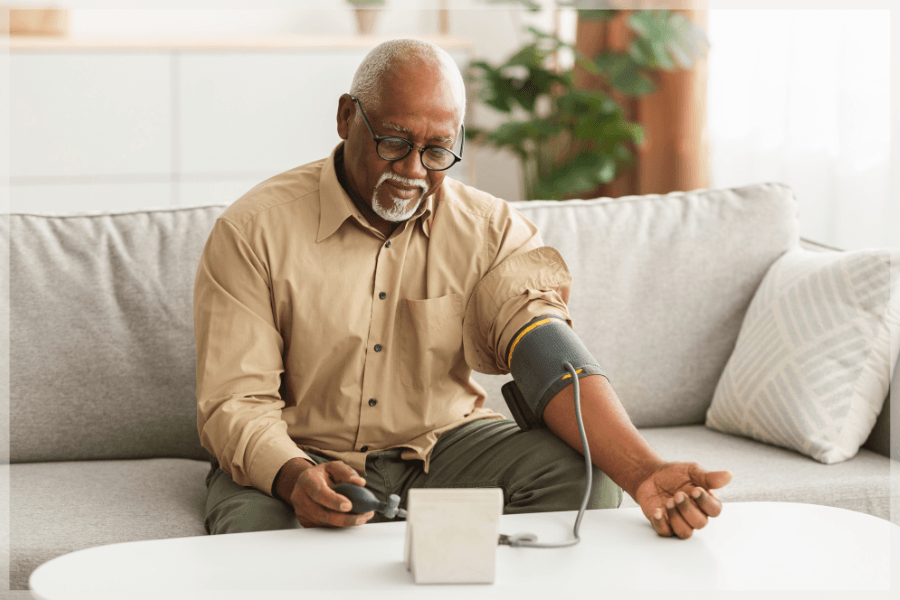
Knowing the warning signs of a stroke is crucial to keeping at-risk seniors safe and protecting them from brain damage, other disabilities, and death. Keep reading to learn more.
Updated January 16, 2023
What Are The Warning Signs Of A Stroke?
A stroke occurs when blood flow to the brain is disrupted or limited due to a blocked or burst blood vessel, stopping oxygen and nutrients from reaching the brain. Without these vital resources, brain cells die within minutes. For this reason, getting medical help as fast as possible is critical.
In the United States, stroke is the fifth leading cause of death. They can leave survivors with several disabilities and challenges on the road to recovery. The chance of stroke becomes higher as we age. Learning stroke warning signs and preventative measures to protect yourself or your loved ones is critical.
Risk Factors And Warnings Signs Of A Stroke
Warning Signs Of A Stroke
Recognizing the warning signs of a stroke and taking immediate action could mean the difference between life, death, and disability.
Stroke symptoms happen suddenly, so call 911 immediately if you see or experience any of the following:
- Drowsiness
- Severe headache with unknown cause
- Confusion or difficulty speaking or understanding
- Dizziness, nausea, poor balance or coordination, difficulty walking
- Vision problems in one or both eyes (such as vision loss or double vision)
- Numbness or weakness in the face, arm, or leg (particularly on one side of the body)
Another way to remember the warning signs of a stroke is the acronym FAST:
- F – Face drooping, one side of the face may become numb or droop.
- A – Arm weakness, where someone may be unable to lift or hold their arm in the air when asked to raise them above their head.
- S – Speech difficulty, when speech becomes slurred and the person can’t repeat what is said to them.
- T – Time to call 911. Even one of these symptoms is enough to warrant calling emergency medical services. When a stroke happens, every second counts.
Never ignore the warning signs of a stroke. If you believe a loved one is having a stroke, immediately call 911. Try to remember when the first stroke warning signs started. The dispatcher will give instructions for you in the meantime until help arrives.
Risk Factors For A Stroke
Several factors increase the likelihood of a stroke, such as certain medicines, environmental factors like air pollution, or chronic stress. Knowing the other risk factors for stroke will help you prepare better in an emergency:
- Age: A stroke can strike at any age. According to the American Stroke Association, the chances of a stroke double every decade after age 55.
- Gender: Strokes are more likely to occur in women, who are also more likely to die than men.
- Race/ethnicity: Black, Latino, and Native American adults have a higher stroke risk than White adults. However, researchers are studying how historical disparities, such as inequitable access to healthy foods and health care, influence this risk.
- Family history: The risk of a stroke is higher for people whose parents or other relatives have had a stroke, especially at a younger age. Likewise, specific genes (like those that determine blood type) can also increase the chance of a stroke.
- Unhealthy lifestyle choices: Smoking, an unhealthy diet, high blood pressure, diabetes, and obesity are all things that can increase the chance of stroke. Taking special care to monitor these things can go a long way to decreasing someone’s risk. If your loved one has multiple risk factors, consider discussing any necessary changes to keep them safe and healthy.
How To Prevent The Warning Signs Of A Stroke
There are many ways for seniors to lower their chance of stroke.

Quit Smoking
There are several ways that smoking affects the body and raises the risk of stroke:
- It lowers the levels of “good” cholesterol and increases the amount of “bad” cholesterol
- It reduces the body’s oxygen levels, causing the heart to beat faster, and raising blood pressure
- Smoking makes the blood more prone to clotting
Altogether, these factors can increase the risk of hardened arteries. This condition limits blood flow, leading to high blood pressure, a higher risk of blood clots, and stroke.
Eat Healthy Foods
A balanced diet, combined with regular physical activity, helps manage many of the risk factors of strokes, such as:
- Blood pressure
- Cholesterol
- Diabetes
Consider eating foods rich in omega-3 fatty acids, like seafood, or following the Mediterranean diet. And, of course, eating more fruits and vegetables and cutting out processed foods and sweets is another excellent way to manage weight while lowering the likelihood of stroke.
Exercise Regularly
It’s understandable that as we age, mobility can become more of a challenge. However, it’s still essential that seniors get a minimum of half an hour of exercise every day. A sedentary lifestyle can raise the risk of stroke-causing blood clots, so older adults must stay active. It can be low-impact activities such as walking, water aerobics, or even housework. There are also several indoor exercises for seniors to keep their blood pressure low.
Get Enough Sleep
Older adults need seven to nine hours of sleep to maintain health and well-being. This is the perfect amount of time for the body to rest and heal. According to a recent Harvard study, anything longer than 9 hours can increase the likelihood of stroke to 63%. Additionally, staying in bed for too long contributes to a sedentary lifestyle and affects cardiovascular health, diabetes, and other problems.
MeetCaregivers Can Help
Learning the warning signs of a stroke is essential to keeping at-risk seniors safe and protecting them from brain damage, other disabilities, and death. However, getting the right treatment as soon as possible isn’t just the difference between life and death. It can also reduce the debilitating, long-term effects.
If you or a loved one needs extra assistance, consider reaching out to MeetCaregivers for help. Our qualified professionals can track your loved one’s day-to-day health, provide rides to appointments, and ensure they stick to any treatment plans.
Get started and find a caregiver today, or call 1 (888) 541-1136 to speak directly with a care manager.
Check out our Blog for more resources about caregiving and aging in place.
- Hoffman, H. (2018, June 10). How to Detect the Early Warning Signs of a Stroke. Early Warning Signs of a Stroke – What to Look For, How to Act | Saebo. Retrieved September 9, 2019, from https://www.saebo.com/blog/detect-early-warning-signs-stroke/ Updated May 2, 2022
- Mayo Clinic Staff. (2022, January 20). Stroke. Stroke – Symptoms and causes – Mayo Clinic. Retrieved January 13, 2023, from https://www.mayoclinic.org/diseases-conditions/stroke/symptoms-causes/syc-20350113
- National Heart, Lung, and Blood Institute. (24AD). Stroke: Causes and Risk Factors. Causes and Risk Factors | NHLBI, NIH. Retrieved January 13, 2023, from https://www.nhlbi.nih.gov/health/stroke/causes
- National Institute on Aging. (n.d.). Stroke. Stroke | National Institute on Aging. Retrieved January 13, 2023, from https://www.nia.nih.gov/health/stroke
- Parker, A. (2017, July 26). Top Warning Signs & Symptoms of Stroke in Seniors. Warning Signs & Symptoms of Stroke in Seniors | Cahoon Care Associates. Retrieved September 9, 2019, from https://www.cahooncare.com/top-warning-signs-symptoms-stroke-seniors/ Updated December 28, 2022
- World Stroke Organization. (2019, September 17). Understanding Smoking And Stroke. STROKE_RISK_AND_PREVENTION_LEAFLET_SMOKING-EN.pdf. Retrieved January 13, 2023, from https://www.world-stroke.org/assets/downloads/STROKE_RISK_AND_PREVENTION_LEAFLET_SMOKING-EN.pdf
